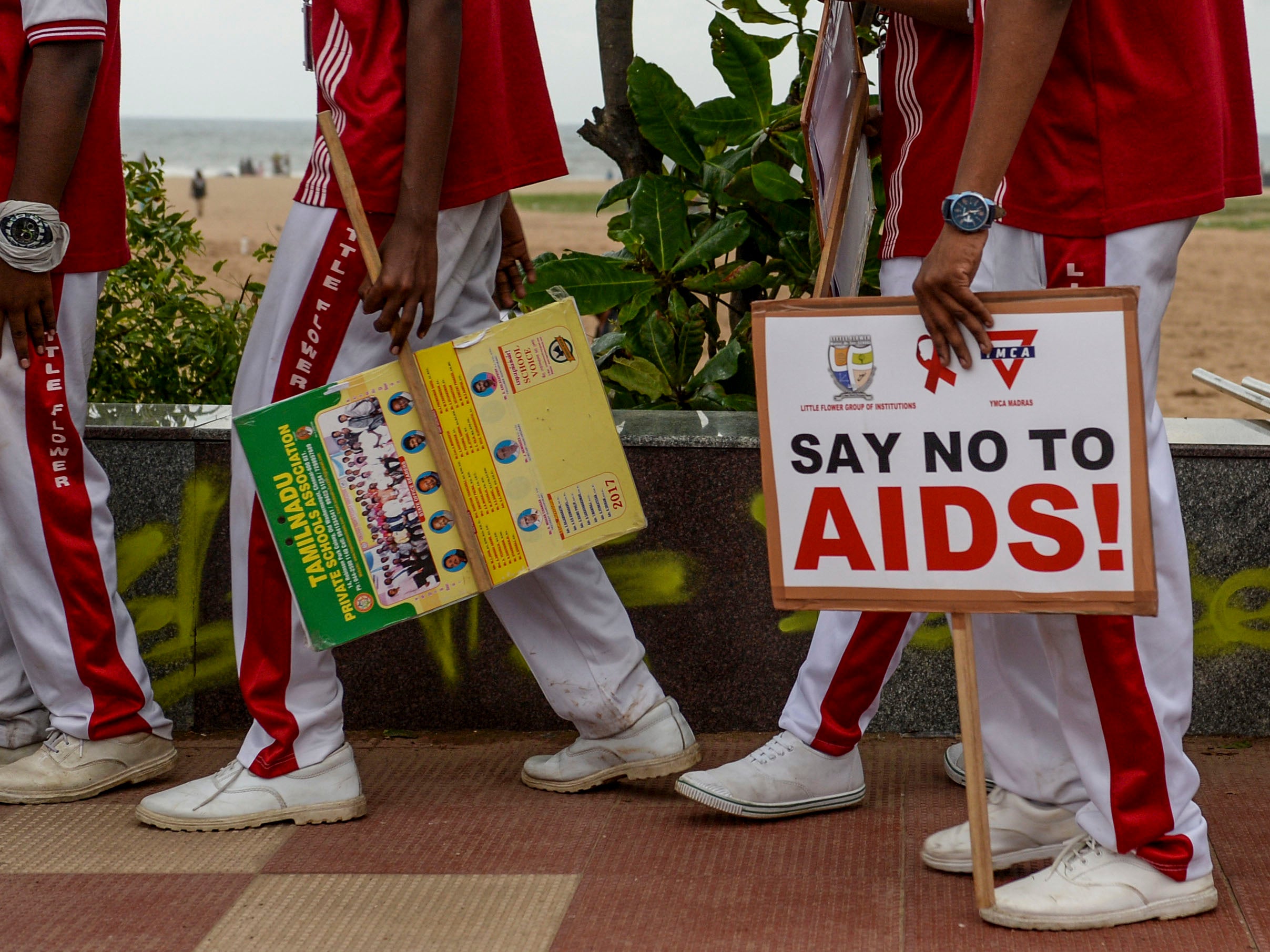A new diagnosis of HIV is made in children or adolescents every 100 seconds
“The Covid-19 crisis has further exacerbated inequities in access to life-saving HIV services for children, adolescents and pregnant mothers everywhere" says Unicef executive director.

Your support helps us to tell the story
From reproductive rights to climate change to Big Tech, The Independent is on the ground when the story is developing. Whether it's investigating the financials of Elon Musk's pro-Trump PAC or producing our latest documentary, 'The A Word', which shines a light on the American women fighting for reproductive rights, we know how important it is to parse out the facts from the messaging.
At such a critical moment in US history, we need reporters on the ground. Your donation allows us to keep sending journalists to speak to both sides of the story.
The Independent is trusted by Americans across the entire political spectrum. And unlike many other quality news outlets, we choose not to lock Americans out of our reporting and analysis with paywalls. We believe quality journalism should be available to everyone, paid for by those who can afford it.
Your support makes all the difference.Approximately every 100 seconds, a child or young person under the age of 20 was newly infected with HIV last year, bringing the total number of children living with HIV to 2.8 million, Unicef said in a recent report.
The UN agency states that children are being “left behind” in the fight against HIV.
While prevention efforts and treatments for HIV are growing and becoming more available in some regions, many children across the world are unable to access HIV treatment, with Latin America and the Caribbean and west and central Africa shown to have the lowest rates of paediatric treatment for the virus.
In 2019, just under half of infected children worldwide did not have access to life-saving treatment, significantly lagging behind coverage for both mothers (85 per cent) and all adults living with HIV (62 per cent). Nearly 110,000 children died of Aids last year.
“Even as the world struggles in the midst of an ongoing global pandemic, hundreds of thousands of children continue to suffer the ravages of the HIV epidemic,” said Unicef executive director Henrietta Fore. “There is still no HIV vaccine. Children are still getting infected at alarming rates, and they are still dying from Aids. This was even before Covid-19 interrupted vital HIV treatment and prevention services putting countless more lives at risk.
“The Covid-19 crisis has further exacerbated inequities in access to life-saving HIV services for children, adolescents and pregnant mothers everywhere.”
In the months of April and May, coinciding with partial and full lockdowns, paediatric HIV treatment and viral load testing in children in some countries declined between 50 to 70 per cent, and new treatment initiation fell by 25 to 50 per cent.
Similarly, health facility deliveries and maternal treatment were also reported to have reduced by 20 to 60 per cent, maternal HIV testing and antiretroviral therapy (ART) initiation declined by 25 to 50 per cent, and infant testing services declined by approximately 10 per cent.
The data in the recent Unicef report, Reimagining a resilient HIV response for children, adolescents and pregnant women living with HIV, has found that 150,000 children aged 0-9 years were newly infected with HIV, bringing the total number of children in this age group living with HIV to 1.1 million.
Additionally, 170,000 adolescents aged 10-19 were newly infected with HIV, bringing the total number of adolescents living with HIV to 1.7 million.
The total number of Aids-related deaths of children and adolescents was 110,000 in 2019, this marks a slight decrease of 5 per cent from the 116,800 deaths in 2018.



Join our commenting forum
Join thought-provoking conversations, follow other Independent readers and see their replies
Comments